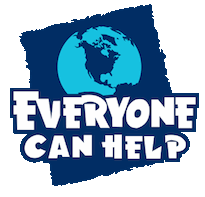How to Organize a Beach Cleanup in Your Community
1. Identify beach areas and other aquatic sites (marshes, lakes, rivers, ponds) in your area that need to be cleaned and that are safe and accessible to volunteers and boaters.
• Ensure that you will have access to the site and that you have the necessary permission to be at the site.
• Identify potential volunteer checkin site(s) that will be clearly visible and have available parking. There should be a “checkin” station for volun teers to sign in and receive trash bags, data cards, pencils and instructions.
• Volunteers should be instructed to return to the checkin station when they are finished to bring back their completed data cards and trash bags.
• The checkin station should be clearly accessible and have parking. For example, if you are con ducting a waterway cleanup, the station could be located next to a boat ramp or central area of a marina. You may want to post signs or posters directing people to the proper location.
• Select site coordinators who can manage cleanup activities at each site.
• Once you have identified your sites, checkin loca tions and site coordinators, please notify your state or country coordinator so they can have the infor mation handy when volunteers and media call.
2. Identify site coordinators who can manage cleanup activities at each site. Hold a site coordina tors’ meeting. • This is your opportunity to distribute materials to
your local site coordinators and make sure they understand what they have to do. They should know the importance of data collection; how to fill out the report forms; the importance of keeping track of numbers of volunteers, trash col lected (weight, number of bags filled), entangled animals found and the benefits of working with the media. All site coordinators should visit their site before the cleanup (well in advance of the cleanup event date), decide where they will set up their checkin station, where the dumpster and recycling container(s) should be located and where volunteers will be sent to clean.
• Review what to do in case of a health emergency(see #10) or with dead or entangled animals (see #11).
3. Contact merchants and other potential donors who can supply drinks, food, raffle prizes or what ever else you might need. • Many merchants will jump at the chance to be
involved in such a positive community event. It is good public relations for them, and you can make it even better by remembering to mention all your donors and sponsors in press releases or con versations with the press. Donations of this type also encourage participation.
4. Recycling. • Contact recyclers in your area who
will accept aluminum, glass and plastic bottles and make appro priate arrangements.
• Recycling the aluminum, glass, plastic, and in some cases, other metals, should be a major emphasis of your cleanup. Some localities may have Recycling Coordinators in their Solid Waste Departments who can assist you
Marine and other aquatic debris are more than unsightly inconveniences for beachbound vacationers or pleasure boaters; they are one of the most pervasive pollution problems affecting our oceans and waterways.
Marine debris is any manmade object discarded, disposed of or abandoned that enters the coastal or marine environment. It may enter directly from human activities, or indirectly when washed out to sea via rivers, streams and storm drains. Since the 1960s, the world’s dependence upon natural mate rials has been largely replaced with the use of durable, highly buoyant, synthetic items. Once they enter the ocean environment these products – such as cigarette filters, food wrappers, beverage bottles and cans, grocery and trash bags, and fishing line, nets and gear — can travel thousands of miles on ocean currents, posing a threat to ocean ecosystems and wildlife along the way. While the types of debris are as diverse as the products found around the world, they all share a common origin – people. At a critical point, someone, somewhere, mishan dled it — either deliberately or thoughtlessly.
Aesthetically, marine debris is an eyesore and can have a major effect on the tourism industry in waterfront communities. More importantly, thou sands of marine animals die each year from becoming entangled in debris or from ingesting it. Marine debris can impact critical habitat, smoth ering seagrasses or dislodging or injuring corals. Marine debris can also pose human health and safety risks. Syringes, broken glass and other haz ardous items pose obvious dangers to barefooted beach goers. Grocery and trash bags, fishing line, nets, rope and other debris can wrap around boat propellers and clog seawater intakes, causing costly damage and becoming a safety hazard. Medical and personal hygiene debris can enter waterways when sewer systems fail or overflow. These items often contain harmful bacteria and pathogens.
Congress has enacted laws to limit the dumping of garbage from boats and to help control landbased sources of marine debris by mandating the imple mentation of systems such as stormwater systems and combined sewer systems. Citizens have also made great efforts to fight this problem through local outreach and education efforts and worldwide beach cleanups. The Ocean Conservancy acts as the coordinator for the annual International Coastal Cleanup (ICC). Volunteers clean beaches and collect information on what they find so that sources of marine debris can be targeted for education or pol lution prevention campaigns.
Proper data collection is extremely important. Each year, Ocean Conservancy compiles and analyzes the data that ICC volunteers collect worldwide. The results of the analysis become a powerful tool in finding the sources of marine debris, helping to identify solutions and developing effective pollution control strategies to help prevent this pollution problem.
Source: http://marinedebris.noaa.gov/outreach/
